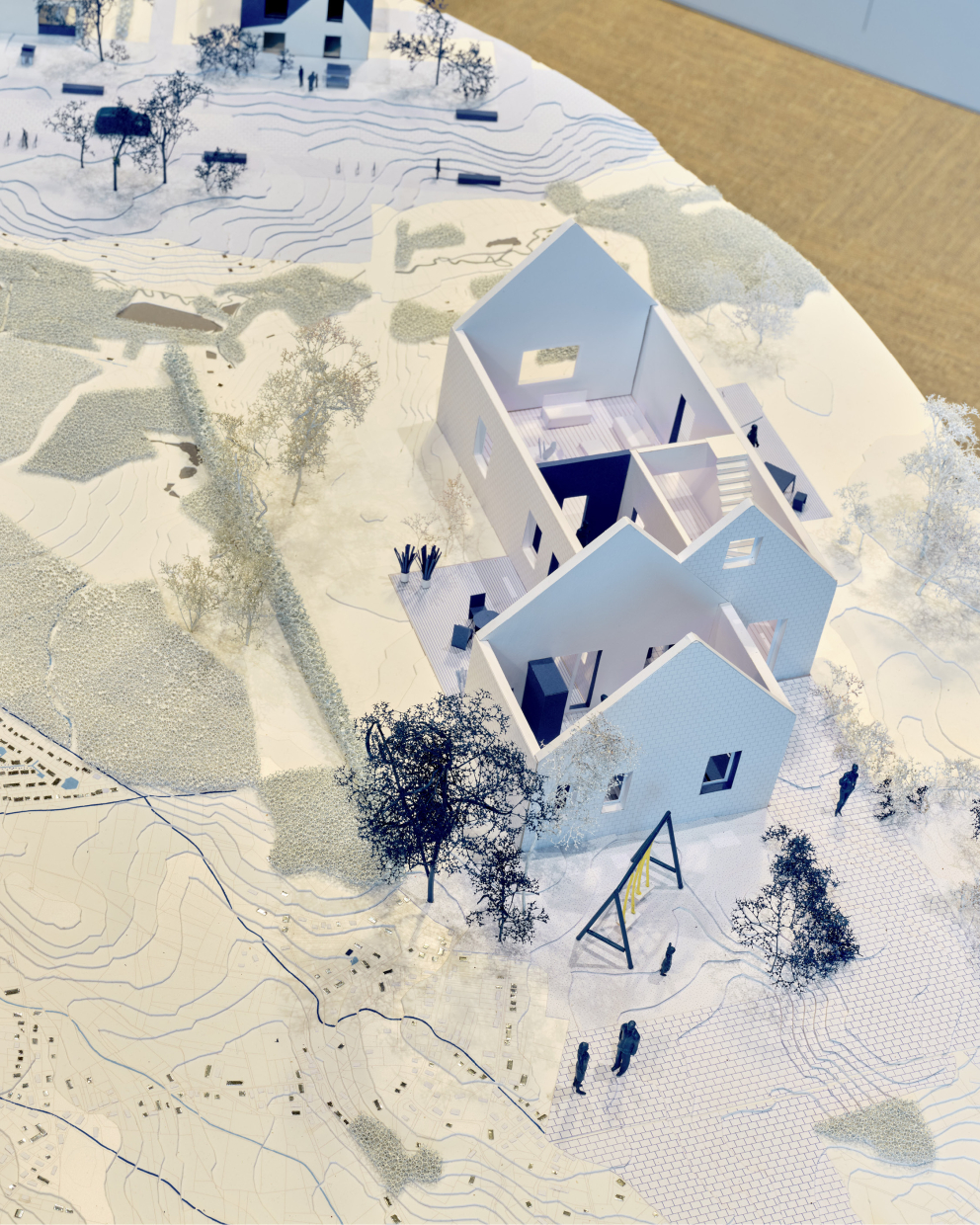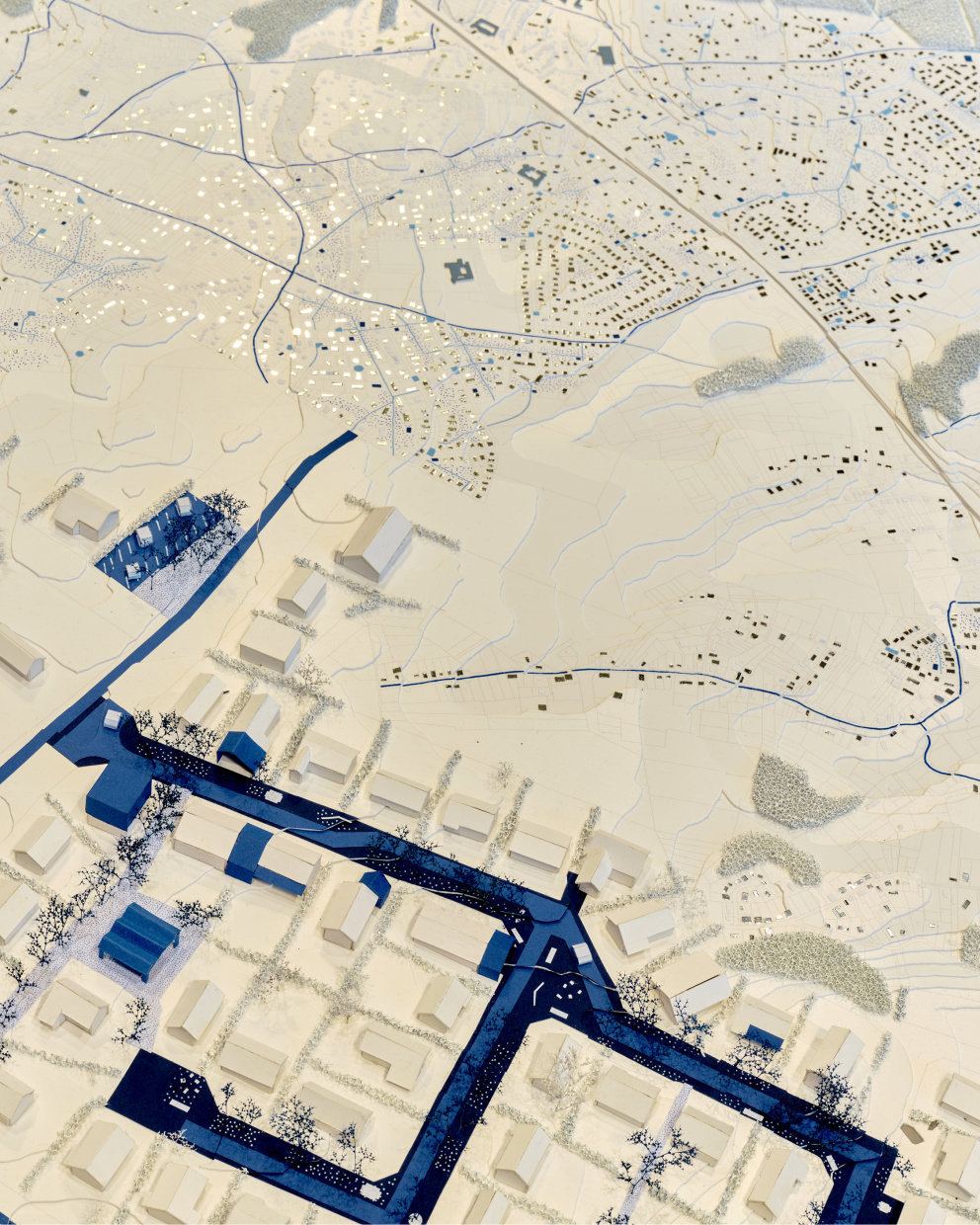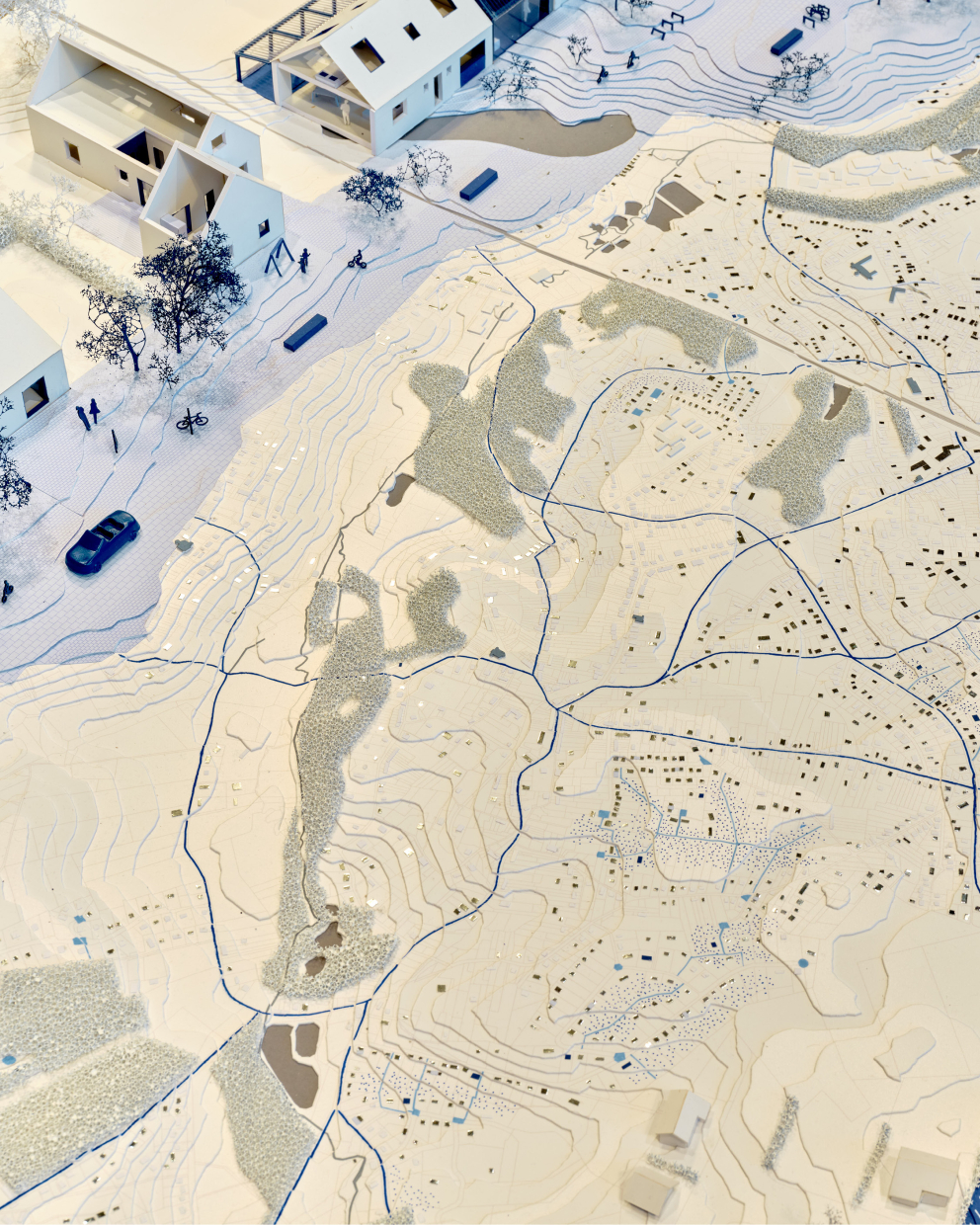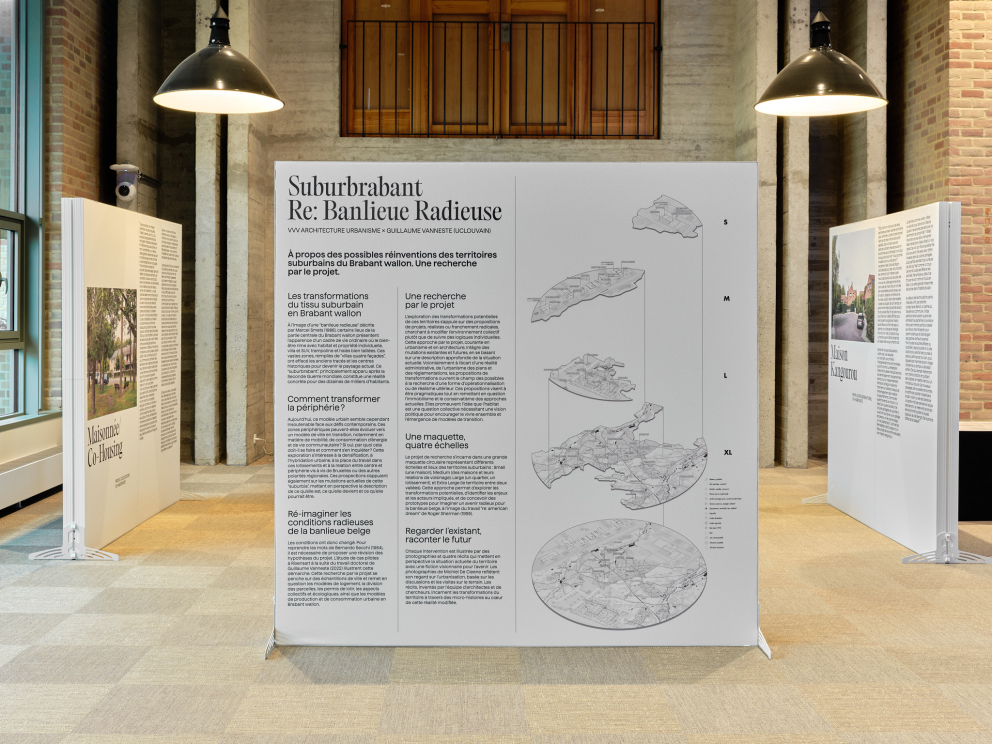Suburbrabant Re: Banlieue Radieuse
About the potential reinventions of suburban territories in Walloon Brabant. A research through the project.
This exploration focuses on the transformations of suburban fabric in Walloon Brabant, inspired by the "radiant suburb" described by Marcel Smets. These extensive areas, comprised of "four-sided villas," emerged after World War II, replacing old layouts and historical centers. Currently, this urban model appears to face contemporary challenges, prompting the question of whether peripheral areas can evolve towards a transitional city model. The exploration examines the possibility of transformation by delving into aspects such as mobility, energy consumption, community life, densification, and urban hybridization. It draws on the current mutations of this "suburbia" to contextualize its potential evolution.
With conditions having evolved, a revision of the project's assumptions is proposed, illustrated by case studies in Rixensart. The project's research challenges housing models, plot divisions, land-use permits, and collective and ecological aspects. Transformation proposals, deliberately on the fringes of administrative constraints, open up realistic or radical perspectives, advocating for a collective and political approach to encourage community living and the emergence of transitional models.
The research project is embodied in a large circular model representing different scales of suburban territories, exploring potential transformations and identifying issues. Each intervention is illustrated by photographs by Michiel De Cleene and fictional narratives created by the team, offering a prospective vision for the future of the Belgian suburb.





